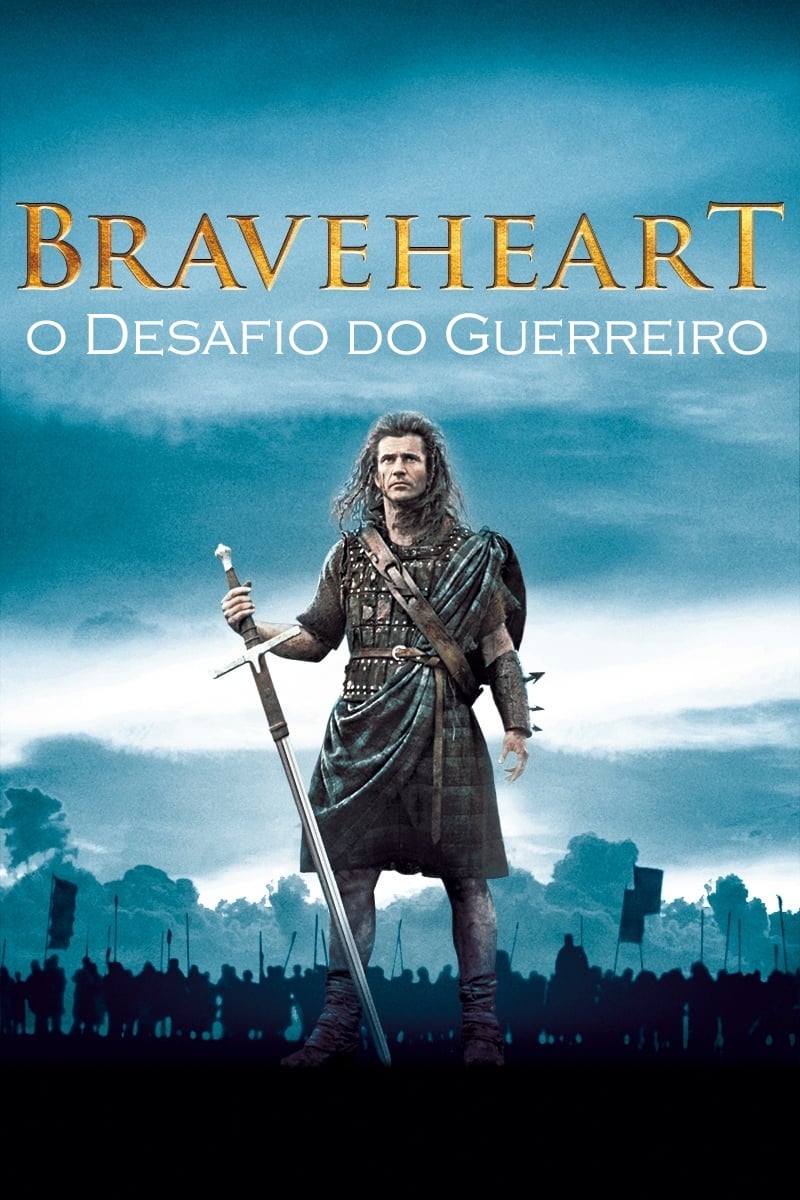Spoilers:
- William Wallace is executed.
- Robert the Bruce betrays William.
- Wallace’s wife is killed early on.
- Wallace leads a successful rebellion.
- Wallace’s throat is slit by a friend.
- Scotland continues to fight for freedom.
- Freedom cry at execution inspires revolt.
Braveheart: Key Statistics
Movie Details
- Title: Braveheart
- Director: Mel Gibson
- Release Year: 1995
- Genre: Historical Epic, Drama
- Running Time: 178 minutes
Box Office
- Budget: $72 million
- Box Office: $213 million
Awards
- Academy Awards: 5 wins
- Notable Wins: Best Picture, Best Director
Critical Reception
- Rotten Tomatoes: 75%
- Metacritic: 68/100
- Audience Survey: A on CinemaScore
Main Cast
- Mel Gibson: William Wallace
- Sophie Marceau: Princess Isabelle
- Patrick McGoohan: King Edward I
Notable Themes
- Freedom and Courage
- Love and Sacrifice
- Betrayal and Revenge
Filming Locations
- Primary Locations: Scotland, Ireland
Randall Wallace’s Braveheart plunges into the raw crevices of human spirit, narrating a tale that is as fiercely passionate as it is brilliantly thought-provoking. This visceral exploration of the Scottish rebel William Wallace is framed in a delicate juxtaposition of intimate pain, undying love and the relentless pursuit of freedom, creating a tapestry of emotions that play out powerfully on screen. Wallace’s masterful storytelling is underpinned by the ruthless authenticity and introspective depth he instills, rendering unearthly landscapes of warfare and love that echo with historical realism. His understanding of Wallace as both man and myth depicts a character as majestic as he is vulnerable, rebutting the hollow stereotypes of a ruthless warrior and opening up a discourse on the complex dimensions of the human spirit. The courage to stand and the terror of falling, he portrays, are sparks from the same flame. Provocatively, Wallace unearths the psyche of a nation, an entity construed by the shared resilience and etched memories of its people, rather than just geographical boundaries. Amidst the thundering tumult of rebellion and defiance, lie tales of individual valor, the heart-wrenching impact of personal loss, and the untamed yearning for liberty. In Braveheart, Wallace creates a narrative that throbs with life and aches with death, a story that imbues the tragically short-lived everyday moments with profound significance. It stimulates the audience, inspiring with its tales of heroism while inciting reflective thought. His knowledge and understanding of Scottish history lend credibility, creating an enthralling, compelling narrative.Braveheart, thus, is emotional as it is provocative, and deep as it is knowledgeable. It etches a profound image that resonates with the human condition, redefining what it means to truly live rather than merely exist, and what it means to die for something than to live without everything.
An Introduction to Braveheart
“Braveheart,” released in 1995, is a historical epic that continues to captivate audiences and ignite discussions about its historical accuracy. Directed by and starring Mel Gibson, the film portrays the life of William Wallace, a 13th-century Scottish warrior who led the Scots in the First War of Scottish Independence against King Edward I of England.
Plot Overview
The movie follows Wallace from his humble beginnings to becoming a key figure in rallying the Scots. It highlights themes of freedom, bravery, and resilience. Central to its narrative is Wallace’s tragic love story and his quest for vengeance, which fuels his dedication to the Scottish cause.
Interesting Facts
- The iconic face paint, a prominent visual element, is not historically accurate for Wallace’s time but adds dramatic flair.
- While the film won five Academy Awards, including Best Picture and Best Director, it faced criticism for its numerous historical inaccuracies.
- Mel Gibson initially didn’t intend to play Wallace; he sought another actor but took the role due to studio pressure.
Known Speculation
- There is ongoing debate about the size and impact of Wallace’s rebellion compared to how it is depicted.
- Historical characters and chronologies were altered for storytelling purposes, sparking debates among historians.
Bizarre Elements
One of the more bizarre elements is the romantic subplot between Wallace and Isabella of France, King Edward II’s wife, which historians find implausible. Isabella was a child during Wallace’s rebellion and only arrived in England after his death.
Public Perception Over Time
Upon release, “Braveheart” received widespread acclaim from audiences, who were swept away by its grand battle scenes and emotional depth. Critics praised its epic scale but noted its embellishments.
Over time, the public’s view has evolved. While it remains a beloved classic, known for its rallying line “They may take our lives, but they’ll never take our freedom!” it is also scrutinized for its factual liberties.
Braveheart Beat-by-Beat: The Rebellion in Bullet Points
Strap in. Here’s the lean, mean storytelling machine that is Braveheart, chopped into its core beats.
Introduction: Scotland, 1280
Young William Wallace witnesses the brutal realities of English occupation. Seeds of rebellion are sown.
Rising Action: A Man Returns
Adult Wallace (Mel Gibson) comes back to a ravaged Scotland. Love blooms, disaster strikes, a bride murdered. Cue the birth of a legend.
Call to Arms: Rallying the Clans
Wallace, fueled by personal vengeance, ignites a nationwide insurrection. Ragtag farmers to fearsome warriors—Scotland unites.
Point of No Return: The Battle of Stirling
Wallace’s tactical genius on display. English forces decimated. Freedom’s flame burns brighter, but at terrible cost.
Midpoint: Knighted but Divided
Nobility conflicts rise. Wallace knights himself in the face of adversity. Internal discord matches the external threat.
Dark Night of the Soul: Betrayal at Falkirk
The ultimate low. Scottish nobles betray Wallace, leading to devastating defeat. Wallace’s faith in unity shattered.
Rally and Revenge: Guerrilla Warfare
Battered but not beaten. Wallace shifts tactics, hits hard. Assassination, ambushes—the freedom fight gets dirty.
Climax: Capture and Conviction
Wallace’s rebellion catches up with him. Betrayed once more, he faces torture and death. But spirit unbroken.
Finale: The Legacy Lives On
Wallace may fall, but his dream of freedom doesn’t. The end? A battle-cry for independence, his legacy immortalized.
Epilogue: Scotland, 1314
Robert the Bruce takes up the mantle. Inspired by Wallace, Scotland clinches freedom at the Battle of Bannockburn. Wallace’s spirit watches, proud.
A Final Note
There you have it. Braveheart: a tale of freedom, the cost of rebellion, and the undying human spirit. No filler, all killer.

Braveheart: A Direct Analysis
The opening of “Braveheart” hits hard and fast. It thrusts viewers into a brutal realm of conflict. It begins with a strong image of William Wallace’s early life, introducing themes of violence, loss, and longing for freedom. The mood is set with quick cuts of battle and the harsh realities of the Scottish struggle against English oppression. This sets the tone for the entire film, establishing the gravity of its themes and the emotional landscape that will unfold.
Story Formula Breakdown
The story formula of “Braveheart” can be dissected into several critical components:
- Exposition: Introduces William Wallace, his family background, and the socio-political turmoil in Scotland.
- Inciting Incident: Wallace’s love for Murron and her subsequent murder by the English triggers his uprising.
- Rising Action: Wallace’s growing influence and the formation of his rebel army.
- Climax: The intense Battle of Stirling where Wallace leads the Scots to a major victory.
- Falling Action: Wallace’s betrayals and setbacks, leading to his capture.
- Resolution: Wallace’s death but the spark of rebellion continues, ultimately influencing future resistance.
Character Driven or Story Driven?
“Braveheart” is primarily character-driven. The film isn’t just a historical account; it’s a deep dive into the heart of William Wallace, exploring his motivations, fears, and relationships. The character arcs drive the story forward, specifically Wallace’s evolution from a simple man to a legendary figure. The audience connects with his emotional struggles, making his journey riveting.
Memorable Character Traits
Wallace is memorable due to his unwavering courage and relentless pursuit of freedom. He embodies the archetype of a tragic hero. His fierce dedication, deep love for Murron, and ultimate sacrifice for his people’s freedom resonate with audiences. The blend of vulnerability and strength makes him an iconic character.
Main Characters
Here’s a brief overview of the key players:
- William Wallace: The protagonist, a Scottish warrior who fights for independence.
- Murron: Wallace’s love interest whose tragic death becomes the catalyst for Wallace’s rebellion.
- Robert the Bruce: A nobleman who struggles between loyalty to the crown and his commitment to Wallace’s cause.
- Longshanks: The ruthless King of England, representing the oppressive enemy.
- Hamish: Wallace’s loyal friend and ally, providing comic relief and emotional support.
Story Flow Template
To write a story similar to “Braveheart,” follow this straightforward template:
- Opening Scene: Introduce the main character and the central conflict/setting.
- Inciting Incident: A pivotal event that changes the character’s life or goals.
- Growing Conflict: Build tension with obstacles, both internal and external.
- Key Relationships: Develop deep connections with supporting characters that influence the protagonist.
- Climax: A dramatic confrontation or turning point where everything is at stake.
- Resolution: Conclude character arcs and provide a resolution to the conflict, leaving room for reflection.
Simple Story Summary
In simple terms, “Braveheart” is about one man’s fight against tyranny. It tells the story of William Wallace, who leads a rebellion to free Scotland from English oppression, driven by love, loss, and the fight for freedom. It’s a tale of courage, sacrifice, and the enduring human spirit.
Inciting Incident
The inciting incident in “Braveheart” occurs when William Wallace’s wife, Murron, is killed by English soldiers. This act of violence awakens Wallace’s fury and sets him on the path of rebellion against English oppression.
Symbolically, Murron’s death represents the loss of innocence and the driving force behind Wallce’s motivations. It transforms him from a peaceful farmer to a vengeful warrior. This moment encapsulates the broader theme of personal loss igniting a collective struggle for freedom.
Act Structure
The film has a clear three-act structure.
Act 1: Setup
We’re introduced to Wallace as a child, his peaceful life, and his love for Murron. Key elements include:
- Wallace’s childhood memories of Scottish freedom.
- The portrayal of English tyranny under King Edward I.
- Wallace’s personal relationships, establishing emotional stakes.
Act 2: Confrontation
After Murron’s death, Wallace rallies the Scots. Key moments include:
- The iconic battle of Stirling Bridge, showcasing guerrilla tactics.
- Wallace’s leadership as he gains followers.
- Political maneuvering and betrayal, adding layers of conflict.
Act 3: Resolution
The final act brings everything to a climax. Key points include:
- Wallace’s capture and torture, emphasizing the cost of his fight.
- The ultimate battle at Falkirk and his cry for freedom.
- The heart-wrenching conclusion, concluding Wallace’s journey.
Climax
The climax occurs during Wallace’s execution. The emotional capital is intense, filled with despair and defiance. Here’s the build-up:
- Wallace’s capture signals the shift from hope to hopelessness.
- His resolve to inspire rebellion even in death heightens the stakes.
- The moment he shouts “Freedom!” resonates deeply, symbolizing his undying spirit and the fight for a larger cause.
Tension and Release
The film builds tension through various means:
- Frequent battles where the odds seem stacked against the Scots.
- Interpersonal conflicts and betrayals that create uncertainty.
- The looming presence of the English army acts as constant pressure.
Release occurs at crucial moments, such as victorious battles or touching individual sacrifices. Each release serves to deepen the viewer’s investment in the characters, offering brief respites before the next wave of tension hits.

Braveheart Ending Explained
At the end of “Braveheart,” William Wallace is captured, tortured, and executed by the English. Despite the pain, he rallies the Scottish people with his final words, “Freedom!” His death ignites a fierce resolve among the Scots, leading them to continue fighting for their independence, ultimately achieving it after his death.
How Writers Categorize the Ending
This ending is often categorized as tragic but also triumphant. It’s a bittersweet conclusion where personal sacrifice leads to collective awakening and change. Wallace becomes a martyr for the Scottish cause.
Symbolic, Thematic, and Speculative Meanings
- Symbolism: Wallace represents the struggle for freedom. His execution symbolizes the brutality of oppression.
- Themes: Freedom, sacrifice, and rebellion are central themes. Wallace’s pain and ultimate sacrifice highlight the lengths one will go for liberty.
- Speculative Meanings: It leaves questions about the cost of freedom and how history often remembers martyrs.
Loose Ends and Payoffs Resolved
The ending resolves Wallace’s personal journey as well as the broader struggle for Scottish independence. It ties up his arc of battling against tyranny and makes clear that, though he dies, his legacy inspires others.
Character Changes
By the end, Wallace transforms from a man seeking personal vengeance to a symbol of hope for his people. He inspires his followers to take up his cause, showing his growth into a leader. Other characters, like Robert the Bruce, evolve from hesitant nobles to determined fighters.
Lessons for Writers
Writers can learn the power of sacrifice in storytelling. A character’s pain can resonate deeply and propel others. It’s also crucial to show how a single person’s courage can ignite a broader movement. Strong themes can make an ending impactful, even in tragedy.
Dialogue Style in Braveheart
The dialogue in “Braveheart” is marked by passion, intensity, and a raw emotional appeal. Characters express their beliefs and motivations in a direct manner. The film uses a mix of historical vernacular and dramatic flair, creating lines that feel both iconic and impactful.
Quintessential Character Moment
A standout moment occurs when William Wallace delivers his rallying speech before battle. His words inspire hope and bravery, signifying his leadership and resolve.
Iconic Lines
- “They may take our lives, but they will never take our freedom!”
- “Every man dies, not every man really lives.”
- “Freedom!”
Uniqueness of the Dialogue
The dialogue stands out for its blend of historical drama and personal conviction. It avoids overly complex language, making emotional connections accessible. The balance of battle cries and intimate exchanges highlights character depth.
Dialogue Density
The script is dialogue-heavy, especially in key moments. Characters often engage in lengthy speeches that serve to develop themes of freedom and sacrifice.
Realism
While historically inspired, the dialogue leans more towards dramatization. It effectively captures the spirit of the time, even if some lines are more theatrical than likely spoken in 13th-century Scotland.
Writer Takeaways
- Use strong, direct language to convey passion.
- Balance dialogue with action; let words build tension.
- Let characters’ values shine through their speech.
Scene Walkthrough
In the scene before the Battle of Stirling, William Wallace addressing his troops is a crucial moment. He begins, “Sons of Scotland! I am William Wallace!” This line establishes his identity and authority right away.
He continues to evoke emotion, saying, “I see a whole army of my countrymen here in defiance of tyranny!” This builds excitement and unity among the soldiers. His speech captures their desire for freedom, which resonates deeply with their struggles.
As he concludes with “They may take our lives, but they will never take our freedom!” the dialogue shifts to a powerful battle cry. The crowd roars, showcasing how effective dialogue can galvanize and inspire action.
Braveheart
In the shadow of the castle walls,
A heart beats wild, a call to rise.
With steel in hand and spirit free,
He defies the chains of tyranny.
Echoes
Across the fields, the whispers fade,
“Freedom” sung in reckless charades.
A Vision
Not for a throne, nor wealth untold,
But for a truth that won’t grow old.
Legacy
In every heart that beats for cause,
A flicker born from ancient flaws.
Existence
Not of glory, but of grit,
Life’s true battle, never quit.
Writing Lessons from Braveheart
Braveheart offers unique insights into storytelling. Here are key lessons to consider:
- Character Motivations: Every character has a clear motivation. Explore what drives your characters. Make it visceral.
- Historical Context: Grounding your story in a specific time period adds weight. Use real events to enhance themes.
- Emotionally Charged Dialogue: Dialogue must resonate. Make it personal, yet universal.
- Conflict Over Resolution: Emphasize struggles rather than neat endings. Leave some threads unresolved for realism.
- Courage and Sacrifice: Themes of bravery and sacrifice are powerful. Weave them into character arcs and plotlines.
- Visceral Visuals: Use strong imagery to evoke emotions. Show, don’t just tell.
- Flawed Heroes: Perfect characters are boring. Flaws add depth and relatability.
- Disruption of Order: Start with a status quo that gets upended. This sparks tension and keeps audiences engaged.
- Symbolism: Use symbols (like the blue paint) to add layers of meaning. Make them iconic.
- Pacing with Purpose: Control the rhythm of your story. Balance action with quieter moments to build tension.
Randall Wallace Discography
Randall Wallace is a notable screenwriter, director, and producer. He is best known for his contributions to films, particularly in the historical drama genre. His notable works include:
- Braveheart (1995) – Screenwriter and Director
- The Man in the Iron Mask (1998) – Screenwriter
- We Were Soldiers (2002) – Screenwriter
- Secretariat (2010) – Screenwriter and Director
- Heaven is for Real (2014) – Screenwriter
Writing Style
Wallace’s writing style is marked by straightforward storytelling that balances action with emotional depth.
Review 1: Excerpt: “Nevermind the Oscar, as just a ripping yarn “Braveheart” is wonderful. In every aspect of production, from writing, acting and directing to the incredible music score and attention to detail, “Braveheart” screams quality. This is a must-see movie for lovers of cinema.” Original Review: [IMDB](https://www.imdb.com/review/rw0543693/?ref_=tt_urv)Review 2:Excerpt: “It generates strong emotions with its extraordinary battle scenes and its centuries-old tale of primitive rage, love and sacrifice. Beautifully photographed and skillfully executed, “Braveheart” clearly demonstrates Mr. Gibson has come of age as a movie director.”Original Review: [The New York Times](https://www.nytimes.com/1995/05/24/movies/film-review-braveheart-gibson-makes-epic-of-epic-scottish-blood-letting.html)Review 3: Excerpt: “Braveheart is a big, strapping medieval sword-and-arrow movie with more fighting than romance, a surprising abundance of lush and sensuous imagery considering its brutal strife, and Gibson fiercely inciting it to stand up and march.”Original Review: [Washington Post](https://www.washingtonpost.com/wp-srv/style/longterm/movies/videos/braveheartrhinson_a05f16.htm)Review 4:Excerpt: “Littered with brutal battle scenes and peppered with rousing speeches, ‘Braveheart’ is a cinematic masterpiece that celebrates the spirit of resistance. Wallace’s story is not only an ode to freedom and independence but a testament to the immortality of such ideals.”Original Review: [Movie Marker](https://moviemarker.co.uk/braveheart-review/)Review 5:Excerpt: “‘Braveheart’ is a masterful epic that weaves a compelling personal journey within larger scale political events. Doesn’t matter that the history is dodgy – it’s the emotions that ring true.”Original Review: [Empire Online](https://www.empireonline.com/movies/reviews/braveheart-review/)
- Randall Wallace – Wikipedia
- Randall Wallace – IMDb
- Randall Wallace (@Randall_Wallace) / X
- Living the Braveheart Life: An Evening with Randall Wallace …
- BRAVEHEART: Wallace, Randall: 9780671522810: Amazon.com …
- WALLACE ENTERTAINMENT
- Randall Wallace | Belmont University
- RANDALL WALLACE | Becoming Braveheart – Order of Man
- How I Broke In: Randall Wallace
- Greg Laurie | I just interviewed the legendary, Randall Wallace …




Leave a Reply